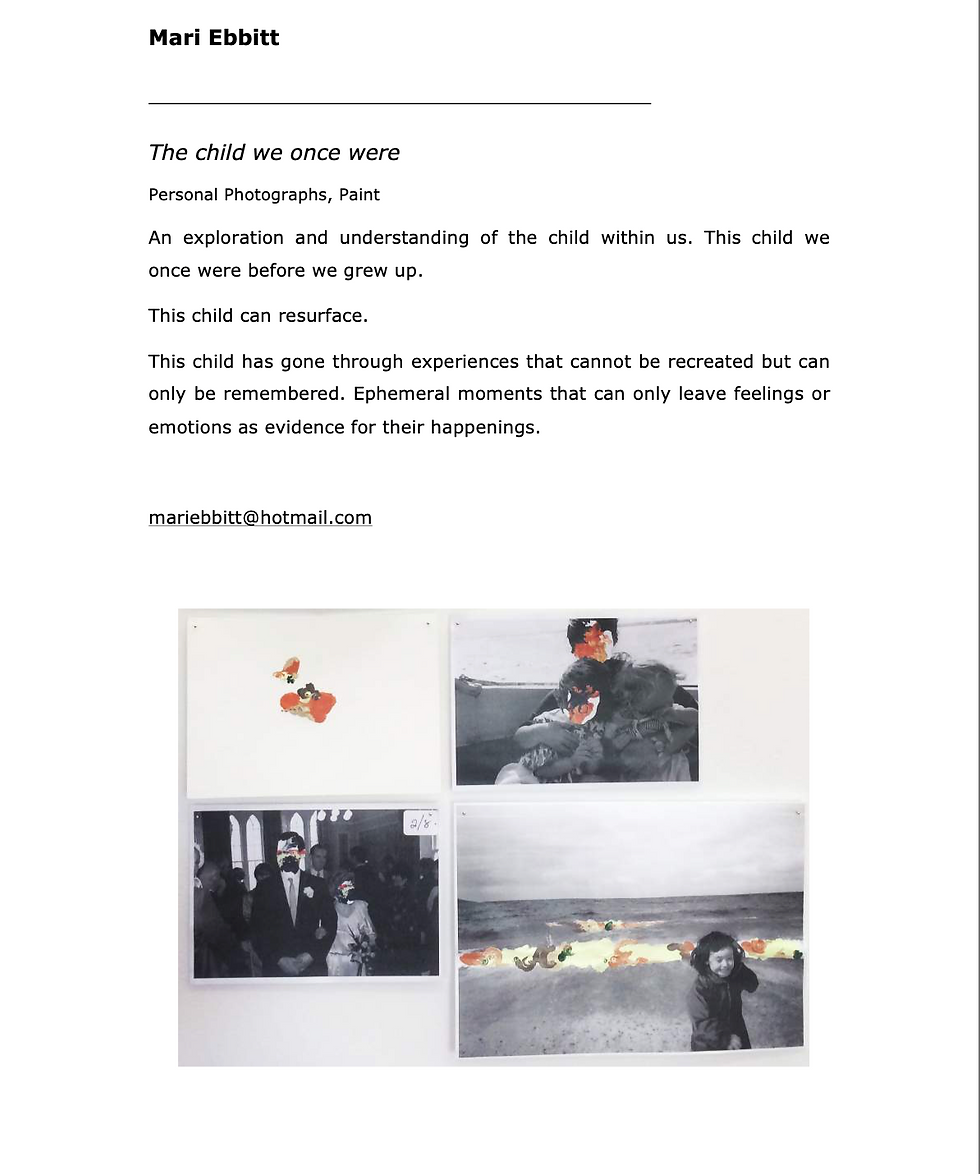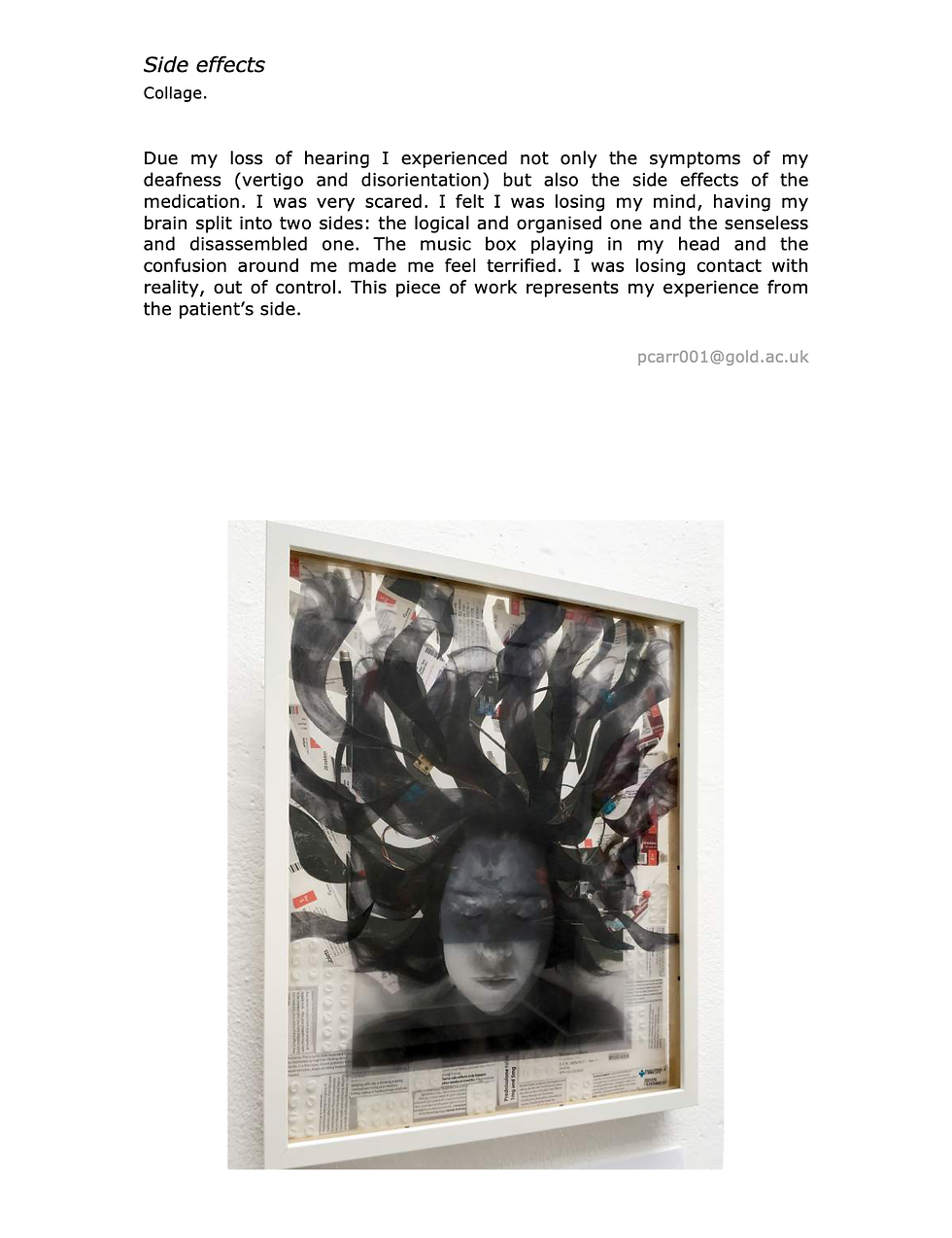The Mental Health Benefits of Art Therapy
- Ola Ogórek

- 28 maj 2020
- 6 minut(y) czytania
RESEARCH JOURNAL - UNIT 7
WHAT IS ART THERAPY?
Art therapy is the safe, therapeutic and creative process of expressing your inner thoughts, feelings, memories and experience through any form of art. Art therapy is perfect for those who struggle with exploring emotions, developing self-awareness, coping with stress or self-esteem, and social skills issues. Additionally, it helps to communicate and explore different aspects of their personalities.
Through Art Therapy we are able to improve our mental, physical and emotional wellness!
HOW IT WORKS?
Art therapy can involve drawing, painting, sculpture, collage, etc. Art created without comments or judgments of others, patients can create artwork for self-expression and psychological interpretation by a clinician. It is up to patients and art therapist which form is applied. Work ethics do not allow an art therapist to display patients work as part of the clinical record.
HISTORY OF ART THERAPY
Therapeutic use of art was developed in the 1940s, although people were already using it for years. The first person in the UK to refer to the therapeutic applications of art as art therapy was Adrian Hill (his book “Art Versus Illness”). Edward Adamson expanded Hill’s work and continued establishing programs in facilities until 1981. He was a follower of “non-interventionist” art therapy (patients could freely create art without psychological interpretation). He publicly displayed 100 000 pieces of art made by patients, creating a massive fuss till these days. USA pioneers of art therapy are Margaret Naumburg, Edith Kramer and Hanna Kwiatkowska (a polish artist, who migrated to the USA). In the mid-twenty century, many mental health facilities and hospitals began to include art as a form of therapy. The discipline continued to grow, becoming an essential tool of treatment of children and adults alike.
WHEN ART THERAPY IS USED?
Creating art can help with a wide range of mental health disorders and psychological distress.
children with learning disabilities
Adults experiencing severe stress
Children suffering from behavioural or social problems
People experiencing mental health problems
Individuals suffering from a brain injury
Children or adults who have experienced a trauma even
Anxiety
Depression
Cancer
Medical conditions
Ageing-related issues
PTSD
Emotional disorders
Eating disorders
Substance use
Family or relationship problems
Psychological issues
Stress
Psychological symptoms associated with other medical issues
STUDY/ RESEARCH
In 2015, researchers Haeyan van Hooren and Hutchemaekers set out an experiment to identify the effects of art therapy on the recovery process in groups of adults with personality disorders. Eventually, they were able to identify five concepts that included all data collected via interview.
Perception and self-perception. Art expression helped individuals identify emotional responses, focus on the present moment and experience connections between emotion and body awareness.
Personal integration. Identity and self-image strengthened. Art expression made emotions visible, allowing individuals to investigate feelings and thoughts further. What is often impossible to do with words, art therapy can bring conflicting emotions together.
Emotion and impulse regulation. Individual learned through art therapy to experiment with new responses to painful feelings, therefore increasing a sense of self-confidence and self-efficacy.
Behaviour change. Through the process of art expression, individuals learned to change their behaviour towards oneself and towards others, as well as behavioural responses.
A 2004 study involves thirty-two women with heart disease who were interviewed and asked to illustrate the illness individually. The use of colour, composition and spatial arrangement was analysed, and the drawings groped into three categories:
The heart at the centre
Heart disease as a social illness
The organ in the lived body
Pictures helped health care professional to understand how each woman comprehend her conditions and provided insight on how to approach the matter in the best way.
Engaging patients with various visual arts exercises and techniques had a numerous of benefits.
The loss of confidence, lack of sleep, and altered social relationships have replaced by the ability to express their feelings symbolically, maintenance of social identity, increased self-worth and focus on positive life experiences.
Other clinical reports state that chronically ill individuals acquaint health and well-being improvement, and people with breast cancer experience increase of positive emotions. People affected by trauma reported lower stress level and increased a sense of purpose; individuals that had hemodialysis treatment reduced depression.
The pressure we feel regarding work, primarily work in corporations can be very overwhelming and cause a tremendous amount of stress.
Harvard University studies show that art improves well-being, increase feelings of belonging and productivity of employees.
Art contributes to creating a safe environment and atmosphere for patients in hospitals. They can socialise more, support their identity, and maintain a connection to the world outside the hospital. Presence of visual art in hospitals improves patients satisfaction.
CONTEXTUAL (exhibitions & artists)
“Beyond Words: The Healing Power of Art” exhibition, designed to raise public awareness of art therapy and foster a more comprehensive understanding of its benefits.
The showcase of paintings from artists, art therapy practitioners and their clients, who found art-making very therapeutic.
This exhibition was a chance to present their story, as well as to sell it.


MA Art Psychotherapy exhibition 2016 - Goldsmith University of London




Harrell Fletcher, Learning To Love You More


THEORETICAL (documentation of the process)
The idea of my project was to engage art in our lives during the quarantine. To do that I came up with the idea of creating a three-day challenge in the mass media. Doing this on social media of the company that I’m having my internship with, creates the opportunity to reach a wider audience. The most significant importance of this project was feedback from people who would be interested in participation.
The Creative Challenge Plan:
Firstly to clarify, I planned the challenge without any previous experience and just a little theoretical knowledge. It cost me a lot of stress and anxiety. However, it was an excellent learning experience. In a few points, I will present how I planned and organised the challenge.
Promotion on company Instagram account that lasted for four days, I created Instagram stories where I explained the idea of the challenge.
Signing up to the challenge was equivalent to signing up to the newsletter.
Later on, I created an event on Eventbrite, for the easy signup process.
After Instagram promotion, I did send out the newsletter so people from the mailing list could sign up as well.
Additionally, I had to create a separate mailing list for the challenge participants, so I could directly send emails with art exercises to those who signed up.
I wrote three emails, with tasks that sent them out on Wednesday, Thursday and Friday. Creative Art Challenge was suitable for any age group.
Afterwards, I shared a challenge on the company’s blog, making it public.
I asked for feedback about the challenge, thanks to which I was able to create one consistent opinion and later on use it for my project and post in on the blog.
More than 20 people signed up for the challenge and were genuinely interested in the beneficial side of art therapy. Throughout the challenge, I did provide support for participants, so they could feel comfortable by knowing that they have a person to help.
The Art Tasks:
1. WATER + PAINT + DISH SOAP + JAR/CUP + STRAW
Mix water, paint and dish soap
(there are no specific measurements, but just to give you an idea:
Pour water first, add a few drops of soap so you'll be able to create bubbles and add as much paint as you wish - play with the intensity of the colour)
Place jar/cup in the centre of the paper
Take a straw, put it inside the jar/cup and blow!
You'll create bubbles that fall on the pice of paper, creating a unique painting.
2. BOTTLE AND ANYTHING YOUR CREATIVE SOUL WILL DESIRE!
MIX olive oil with some yellow paint (it can be food colouring) and water with blue paint, pour it into the bottle.
Olive oil and water will be separated, but if you shake the container, liquids will mix into beautiful green colour and after few seconds separate again!
Mix different colours, add rice, glitter, pompoms, and sequins.
To make them fall slower, it is worth adding glycerin to the water.
Remember there is nothing to stop you, so create your unique SENSORY BOTTLE!
3. SALT PAINT + MICROWAVE = 3D PAINT
SALT + FLOUR + WATER
MIX THESE THREE INGREDIENTS AND
CREATE THE BASE MASS FOR GROWING PAINT!
ADD DIFFERENT COLOUR OF PAINT, FOOD COLOURING OR CHALK TO THE BASE MASS!
FINISHED PAINTING PUT INSIDE THE MICROWAVE FOR
THE 30S AT 800W.
FEEDBACK
In conclusion, Creative Art Challenge was very pleasant, positive exercise, suitable for any age group.
Participants enjoyed the art tasks, saw them as a good time investment, and a new experience that they would like to continue daily regardless of the challenge ends.
However, entrants were not happy about the lack of pictures as an additional form of the explanation of the tasks. As quite a few of them said, they felt anxious and insecure that the visual part was missing, as they couldn't see how the artwork was created, they depended on their creativity and reading comprehension.
Mostly, the reason was the fear of being judged by the internal critic and by other people. Adults faced this problem; kids did not struggle with that. Overcoming certain beliefs that have been instilled in participants since childhood, was a reason to activate their inner critic, who stopped them from moving further with art exercises, as a fear of the final result of their work.
The pressure of being perfect and high expectations do not make the task easier. With every exercise, and with the realisation that nobody is judging the artwork, the participants became more comfortable and relaxed: it was easier to let things go.
Although that was quite a big issue, as it was mentioned before, the whole group was positive about continuing to create art afterwards.


Komentarze